Vietnam - Laos - Cambodia strategic space in shaping US - China competition goals
In recent times, in addition to the goal of direct competition in the fields of economy, trade, technology or military , from the beginning of the 21st century until now, the US-China strategic competition has emerged first of all as competition in scope and level of influence. This is an inevitable trend in international relations, because a great power when reaching the position of hegemony often seeks every way to prevent the penetration of other major countries into its strategic sphere of influence (1) ; at the same time, it maximizes national power and interests through controlling core geo-strategic areas (security belt, defense-security buffer zone, traditional sphere of influence ("backyard") or emerging strategic spaces that need to be contested and influence expanded). In addition, competition for influence in the new era does not only take place through military power, but also through "soft power". Therefore, the US and China proactively attract, gather forces, and establish strategic links in important geopolitical areas in many aspects, thereby expanding their sphere of influence, consolidating their position as great powers, and moving towards hegemony.
In fact, the strategic space of the three countries of Vietnam - Laos - Cambodia has recently been assessed to hold an important position in the strategic calculations of major countries. This is not only a geopolitical buffer zone on the Indian Ocean - Pacific route, but also a traditional area of influence in the competition for power in mainland Southeast Asia. With its position controlling intercontinental trade routes and strategic economic - military corridors, this area has become the focus of competition for influence between the US and China, associated with the goal of reshaping the regional balance of power and the security structure of the Asia - Pacific.

Regarding the methods and tools of competing for influence, depending on the historical characteristics of the relationship, the level of intertwined interests and the correlation of power with countries in the region, the US and China have deployed many different measures to engage, gradually establishing "rules of the game" that are beneficial to them. In the context of the trend of peace, cooperation and development still being the mainstream of the times, soft intervention measures or indirect competition through economic, political, diplomatic and technological tools are actively utilized by the US and China. The US-China strategic competition tends to adjust in the direction of "controlled detente", shifting from direct confrontation to indirect competition, through the gathering of diverse forces in terms of space, field and scope to gradually establish close relations with countries in the region, creating a network of partners. From there, increase engagement at different levels through regional cooperation mechanisms, initiatives and policies to both expand the strategic influence space, create a favorable balance for oneself and restrain competitors. Specifically:
Economically, in order to gather forces and increase influence, the US and China have stepped up the implementation of bilateral, multilateral and sub-multilateral cooperation initiatives led by these countries. Through free trade agreements, economic corridors, expanded supply chains and investment and financial incentives, small and medium-sized countries have more opportunities to access the markets, capital and technology of the US and China, but they cannot avoid gradually becoming dependent on these large countries.
China effectively uses “soft power”, gathers forces in the “flying cranes” model to counterbalance the US-led force; enhances its position, influence and presence in countries in the region, focusing on economic and trade cooperation, building regional connectivity infrastructure through promoting the “Belt and Road Initiative” (BRI), the Global Development Initiative (GDI), and the Global Security Initiative (GSI). China strengthens neighborly diplomacy, attaches importance to cooperation with neighboring countries and the region with the motto “friendship, sincerity, kindness, and tolerance” (4) , and promotes the formation of a “Community of Common Destiny” with countries in the region.
On a smaller scale, China is actively implementing the Mekong-Lancang Cooperation (MLC) under the “3 + 5” framework, with three pillars of cooperation including politics - security, economy - society, sustainable development - people-to-people exchange. On that basis, MLC identifies five priority directions for cooperation: infrastructure connectivity; improving production capacity; promoting cross-border economic cooperation; managing and sustainably using Mekong River water resources; and developing agriculture associated with hunger eradication and poverty reduction. These are areas that directly impact the development, security and stability of countries in the Mekong sub-region. Not only that, China, through the Greater Mekong Sub-region Cooperation (GMS), aims to create influence over Vietnam, Laos and Cambodia. At the 8th Greater Mekong Subregion Cooperation Summit (November 2024), China clearly expressed its stance on promoting the GMS with the goals of opening up, innovation, connectivity and coordination, promoting a new phase of cooperation in key areas such as infrastructure, trade - investment, agricultural development associated with hunger eradication and poverty reduction. Thereby, China considers the GMS an important complementary channel to continue increasing its economic and strategic influence in the Mekong subregion.
For the US, expanding its influence in the Vietnam-Laos-Cambodia strategic space is an important component in implementing the Free and Open Indo-Pacific Strategy (IPS), especially through the Indo-Pacific Economic Framework for Prosperity (IPEF). Previously, on a smaller scale, the US gradually increased its presence in the sub-region through the Mekong River Basin Initiative (LMI), promoting cooperation among Vietnam, Cambodia, Laos and Myanmar. This policy aims to balance the power of major countries in Southeast Asia, especially to counterbalance China's rapidly increasing influence in the region.
With a focus on promoting sustainable development and transboundary water governance, LMI focuses on improving the quality of education and training, protecting the environment and public health, connecting infrastructure, developing the economy and narrowing the development gap. In addition, the US promotes the Mekong-US Partnership (MUSP) through annual foreign ministers' meetings, aiming to enhance climate change response capacity, ensure water security, improve economic-infrastructure connectivity, promote trade-investment, support the development of small and medium enterprises, and train high-tech human resources. Thereby, the US not only affirms its long-term commitment to the Mekong Subregion, but also takes advantage of cooperation mechanisms to build strategic influence, gradually shape the rules of the game and narrow China's influence in the region.
It can be seen that the above initiatives and mechanisms of the US and China are carefully calculated in the overall strategy to increase influence in the region and the world. The US and China have launched initiatives and mechanisms that go deep into each specific field, forming production and supply chains, including small, separate groups with closed processes, regulations and standards, to shape new standards with partners with the same viewpoint and shared common values. This move aims to reshape the regionalization process, rearrange the network of production chains, regional and global supply chains towards being closer geographically to major markets.
Regarding science and technology , realizing that the security and development space of a country today still depends on the technology development strategy and international cooperation under the impact of the scientific and technological revolution and the globalization process, the US and China identify this field as the goal and driving force of competition in the region. The two countries aim to gain a leading position and position their role in the development process of countries in the region. The dominant position in high technology has become more fierce, decisive in the position of major power strategic competition because these are factors closely linked to national security, economic strength and political power, as well as the position of global superpower. Therefore, the strategic competition between the US and China in this field increasingly shows the trend of politicization and security of supply chains and production chains, especially in high-tech and source technology industries. From exploiting strategic resources, developing base materials, to designing microchips, manufacturing equipment and distributing products..., the US and China are both striving to gain market advantages and positions in strategic competition in the region.
In terms of security , the Vietnam - Laos - Cambodia strategic space is affected by the intertwined impact of traditional and non-traditional security challenges, many of which are directly related to the strategic interests of both the US and China. For example, the East Sea issue is of great importance to China, closely linked to its security and development strategy in the maritime space, while the US considers this an area to assert its role in maintaining international order and law, ensuring freedom of navigation, including freedom of operation of US military vessels, protecting the interests of its allies and curbing China's influence. Through resolving the East Sea issue, the US and China use many measures, from diplomacy, law to defense and security cooperation, to attract and gather forces, enhance influence and achieve their long-term geopolitical goals in the Southeast Asian region, including the Vietnam - Laos - Cambodia strategic space.
At the same time, non-traditional security challenges such as climate change, natural disasters, cross-border epidemics, cyber security, food security, and water security continue to increase and develop in a complex manner, directly impacting the security stability and sustainable development of countries. Non-traditional security is increasingly becoming a space for "soft strategy" competition between major countries. The US and China are strongly exploiting these issues through development assistance programs, such as Mekong River water resources cooperation, health-environment initiatives, digital transformation, cyber security, etc., to increase influence and strengthen the network of partners.
The impact of US-China strategic competition on the Vietnam-Laos-Cambodia strategic space
The increased engagement of the US and China in the region through bilateral, multilateral and sub-multilateral cooperation mechanisms has had profound impacts on the Vietnam-Laos-Cambodia strategic space in both positive and negative directions, in which challenges tend to increase.
About advantages
It can be said that cooperation and competition always go hand in hand in international relations. In the process of competition, major countries use the tool of “stick and carrot”, promoting and strengthening cooperation as a way to attract and compete for influence with countries in the region. This is a favorable condition for countries in the region to expand their strategic space, create a better position in participating in multilateral cooperation with major countries, thereby enhancing their voice and role in promoting the multilateral cooperation agenda in the sub-region. This is also an opportunity for sub-regional countries to take advantage of cooperation and support from major countries to serve the goal of ensuring security and socio-economic development of the country. Along with that, increasing the “bargaining” position of the Vietnam - Laos - Cambodia strategic space. In reality, all three countries Vietnam, Laos and Cambodia have made good use of economic benefits in the process of international integration, including effectively utilizing development resources from the support of the US and China, serving the goal of national development.
About the challenge
Firstly, the narrowing of the strategic space for development cooperation leads to the risk of internal division among countries in the sub-region. Participation in multilateral cooperation mechanisms led by major countries, along with the implementation of initiatives, infrastructure connectivity projects, investments, etc. according to the priorities of each major country, leads to a reduction in complementarity in linkages and development cooperation among sub-regional countries, and even the risk of increasing competition among economies. Sub-regional countries have to face the problem of how to behave in relations with major countries to both ensure national interests and harmonize the interests of the other two countries. In particular, in multilateral cooperation mechanisms led by the US and China, sub-regional countries are at risk of falling into a situation of "division" by national interests instead of overall regional interests. Because competition between major powers limits the strategic choices of small and medium-sized countries, especially for small countries that have closer economic or security relations with major countries than cooperation between countries in the subregion. On the contrary, participating in multilateral cooperation in the subregion, small countries are likely to fall into the spiral of compromise - strategic competition between major countries, thereby adversely affecting national interests and the security and economic environment of the region when conflicts of interest arise between major countries and between countries in the subregion. Therefore, the strategic space for development cooperation between Vietnam, Laos and Cambodia may be narrowed due to differences in interests, reducing the effectiveness of participation of each country, as well as in regional linkages.
Second, the pressure to “choose sides” on countries in the sub-region in the face of strategic competition and increased involvement from both the US and China. Currently, Vietnam, Laos and Cambodia are all facing the challenge of maintaining a strategic balance between the benefits of extensive economic cooperation with China on one side and the advantages of science, technology and trade in cooperation with the US on the other. In that context, maintaining a balance in relations with major countries is considered a suitable strategic choice for small and medium-sized countries to make the most of external resources for development, while ensuring independence, autonomy and not allowing any major country to establish a monopoly influence in the region. The pressure to "choose sides" has therefore become a challenge in the foreign policy of sub-regional countries, especially when the competition for influence between the US and China continues to develop in a complex and unpredictable manner.
Third, increasing instability and uncertainty of the strategic space. The uncertainty comes from the fact that the Asia-Pacific region in general, and Southeast Asia in particular, are considered by major countries to be a region of special geo-strategic significance, while the regional structure is taking shape. Not to mention, the differences in perceptions, strategic interests, value systems and methods of handling international relations between major countries make the regional strategic environment more complex and unpredictable. Competition between major countries takes place not only in the political-security field, but also in the fields of economics, trade, technology, supply chains, and setting the rules of the game in regional institutions. This creates a major challenge to strategic stability, increases the risk of geopolitical risks and local conflicts, leading to instability and unpredictability in the region.
Thus, under the impact of strategic competition between the US and China in the Asia-Pacific region in general and the Mekong sub-region in particular, the challenges facing the three countries of Vietnam, Laos and Cambodia are: First , the security and development environment of the three countries is one of the strategic goals of major countries, thus putting the sub-region in an unstable and divided situation; second , the selfish calculations of major countries lead to a security dilemma, reducing national strategic autonomy, so the three countries need to avoid the risk of being forced to "choose sides" in competition and confrontation between major countries; Third , in the strategic competition between major countries, the three countries need to firmly maintain an independent and autonomous foreign policy, eliminating the risk of dependence on major countries, the risk of gradually becoming a "backyard" or "buffer zone", or even a major country secretly compromising, pushing small countries into a "stuck" situation, unable to decide their own national interests.
Policy suggestions for Vietnam
Ensuring security and development in the strategic space of Vietnam - Laos - Cambodia depends on the will, vision and actions of the leaders of the three countries. In the context of increasing competition for influence between major countries, especially the US and China, the requirement for Vietnam is to harmoniously handle differences in interests and effectively implement its neighborly foreign policy. On that basis, it is necessary to clearly identify the following orientations:
Firstly , firmly uphold the foreign policy of independence, self-reliance, diversification and multilateralization, while flexibly implementing the policy of "dynamic balance" in relations with major countries. Vietnam needs to assess and forecast accurately and promptly the regional and world situation to have response decisions that ensure the highest national interests. In addition, it is necessary to continue promoting multilateral diplomacy, in which sub-regional cooperation is identified as a priority level.
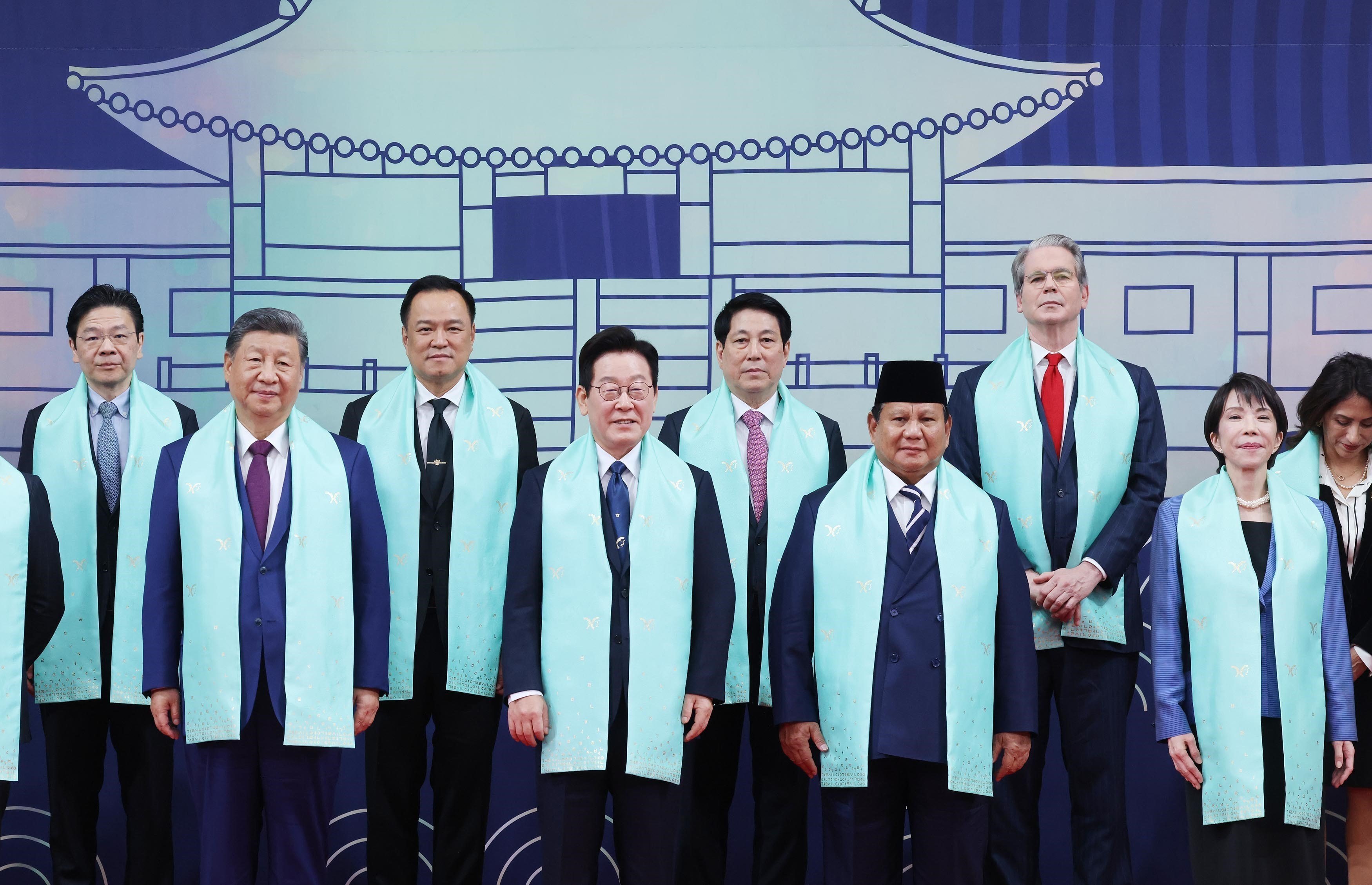
Second , consider and weigh the opportunity to proactively participate in a harmonious manner, co-initiating with major countries, becoming a founding member of sub-regional cooperation mechanisms and structures, especially those that facilitate the enhancement of Vietnam's interests. At the same time, Vietnam needs to skillfully avoid being "stuck" in strategic competition between major countries. This is an opportunity for Vietnam to strengthen its foreign policy of independence, self-reliance, multilateralization, diversification of international relations; enhance its role, strengthen its position and expand national interests, and actively contribute to the stability and development of the region.
Third, continue to prioritize and strengthen relations with neighboring countries, “develop and strengthen the special relationship between the three Indochinese countries… comprehensive cooperation, mutual assistance in building and defending the Fatherland is the law of survival and development of all three brotherly nations” (2) , “continuously consolidate and develop the special solidarity and friendship between our Party and people and the Lao Party and people, the Cambodian Party and people… according to the principles of equality, respect for independence, sovereignty and each other’s legitimate interests” (3) . The 13th Party Congress emphasized: “Target the development of cooperative, friendly and traditional relations with neighboring countries” (4) . Therefore, Vietnam needs to continue promoting friendly and traditional cooperation with Laos and Cambodia because, in terms of security, these are neighboring countries of great geopolitical and strategic significance, an important security belt, directly affecting the security, stability and national survival of Vietnam. In terms of development , stable relations with neighboring countries are an important premise for national development, especially in economic development. In terms of international position , maintaining stable and good relations with neighboring countries is not only a condition for national security and development, but also a key factor, a premise for the country to expand foreign relations , enhance the country's prestige and position in the international arena.
Fourth , in the spirit of construction, cooperation, and concern for the interests of relevant parties, Vietnam needs to persistently advocate and fight, while at the same time having a skillful and flexible way of handling within the framework of cooperation in the region in general and the sub-region in particular. This is an issue that needs to be thoroughly considered because strategically, the Mekong Sub-region plays an important role not only for the security and sustainable development of the country, but is also a core area from which to promote Vietnam's position with a broader vision reaching out to the Asia-Pacific. For any country, the geographical connection and security and development interests in relations with neighboring countries are unchangeable and in some cases have special significance. Maintaining the stability of the common strategic space means sustainably protecting the living space of the country.
Fifth , contribute to solving the internal challenges of the three countries. In reality, although Vietnam, Laos and Cambodia all have high political determination to promote neighborly friendship, the limitations in the actual strength of each country such as economic capacity, science and technology level; differences in interests in exploiting Mekong River water resources; territorial border issues left by history, etc. are obstacles to consolidating and expanding the common strategic space. Therefore, it is necessary to continue to solve the above internal problems; identify and clearly express views on vital strategic issues for Vietnam, including the principle of not allowing third parties to take advantage of the territory to harm Vietnam's security and development.
Sixth , Vietnam, Laos, and Cambodia still need more resources to be able to be "strategically autonomous" in the face of challenges from strategic competition among major countries. Therefore, it is necessary to increase resources to be able to be autonomous in national development strategies, thereby creating better conditions to consolidate the friendly and traditional relations between the three countries, and to cooperate and develop together. Vietnam needs to balance between liberalization and openness with self-reliance; balance between deep and comprehensive integration with strategic autonomy; balance between participating in the common game and enhancing internal resilience. Accordingly, proactively take the lead in creating bilateral and multilateral sub-regional cooperation mechanisms in various fields with Laos and Cambodia, such as: Economic connectivity, especially in building technical and social infrastructure; promoting defense and security cooperation; implementing a long-term strategic vision and cooperating to resolve issues related to international commitments in the management, use and protection of water resources in the Mekong River basin, towards sustainable development, responding to climate change and promoting sustainable development; cooperating in education and training of human resources...
Seventh , in the context of Cambodia's announcement of its withdrawal from the Vietnam-Laos-Cambodia Development Triangle cooperation mechanism (in 2024), Vietnam needs to continue to consult with Laos and Cambodia on promoting extensive, substantive, effective cooperation between the three countries, in line with development requirements in the new period, for the benefit of the people of the three countries, for the ASEAN Community, for peace, stability, cooperation and development in the region. At the same time, continue to continue the special significance of the CLV Development Triangle in stabilizing the political situation, protecting security and order in the border areas of the three countries.
In short, the US-China geopolitical competition in the Vietnam-Laos-Cambodia strategic space has created opportunities and posed complex and intertwined challenges to the security and development of each country. In that context, Vietnam needs to promote its independent and autonomous foreign policy, firmly ensure national interests, and be proactive and flexible in dealing with major countries. Strengthening special solidarity with Laos and enhancing friendly relations with Cambodia is the foundation for Vietnam to maintain a peaceful and stable environment, enhance its international position, and actively contribute to peace, cooperation and development in the region./.
---------------------
(1) See: Nguyen Vu Tung, Nguyen Hoang Nhu Thanh: International Relations Theory , Labor - Social Publishing House, Hanoi, 2017, p. 64
(2) Documents of the 6th National Congress of Delegates , Truth Publishing House, Hanoi, 1991, p. 100
(3) Documents of the 7th National Congress of Delegates , Truth Publishing House, Hanoi, 1991, p. 89
(4) Documents of the 13th National Congress of Delegates , National Political Publishing House Truth , Hanoi, 2021, vol. I, p. 163
Source: https://tapchicongsan.org.vn/web/guest/the-gioi-van-de-su-kien/-/2018/1165902/canh-tranh-dia---chinh-tri-my---trung-quoc-trong-khong-space-chien-luoc-viet-nam---lao---cambodia-va-goi-mo-chinh-sach-doi-voi-viet-nam.aspx















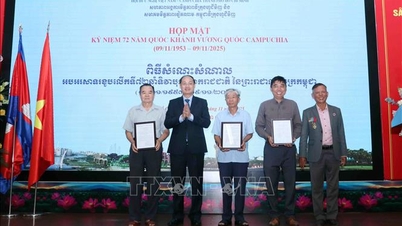

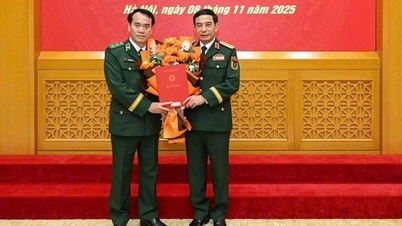


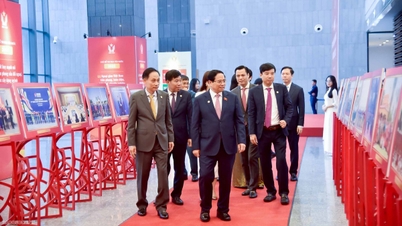



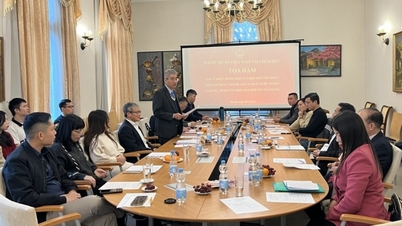








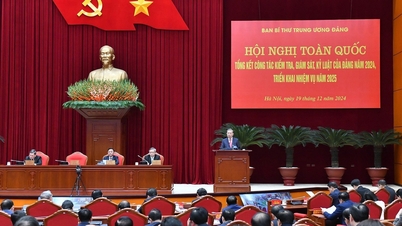









































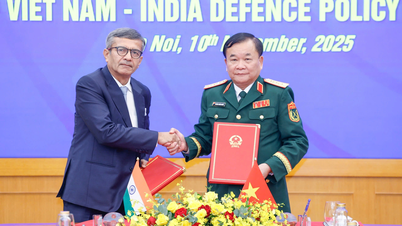


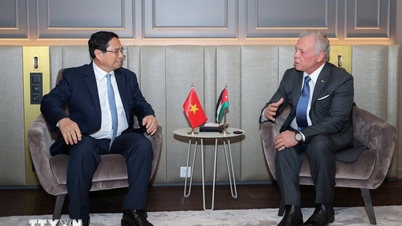
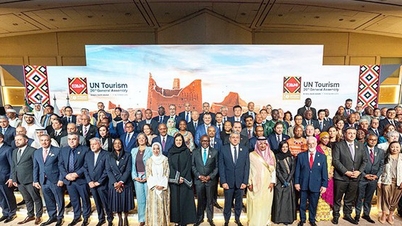







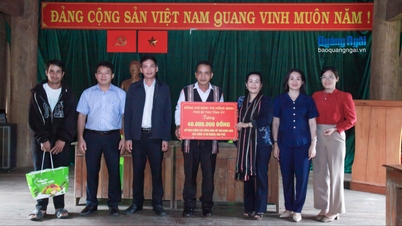





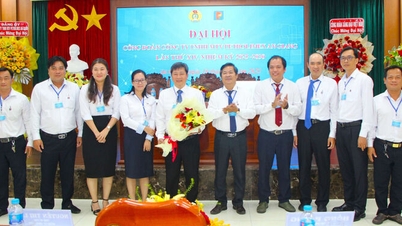



![Dong Nai OCOP transition: [Article 3] Linking tourism with OCOP product consumption](https://vphoto.vietnam.vn/thumb/402x226/vietnam/resource/IMAGE/2025/11/10/1762739199309_1324-2740-7_n-162543_981.jpeg)












Comment (0)